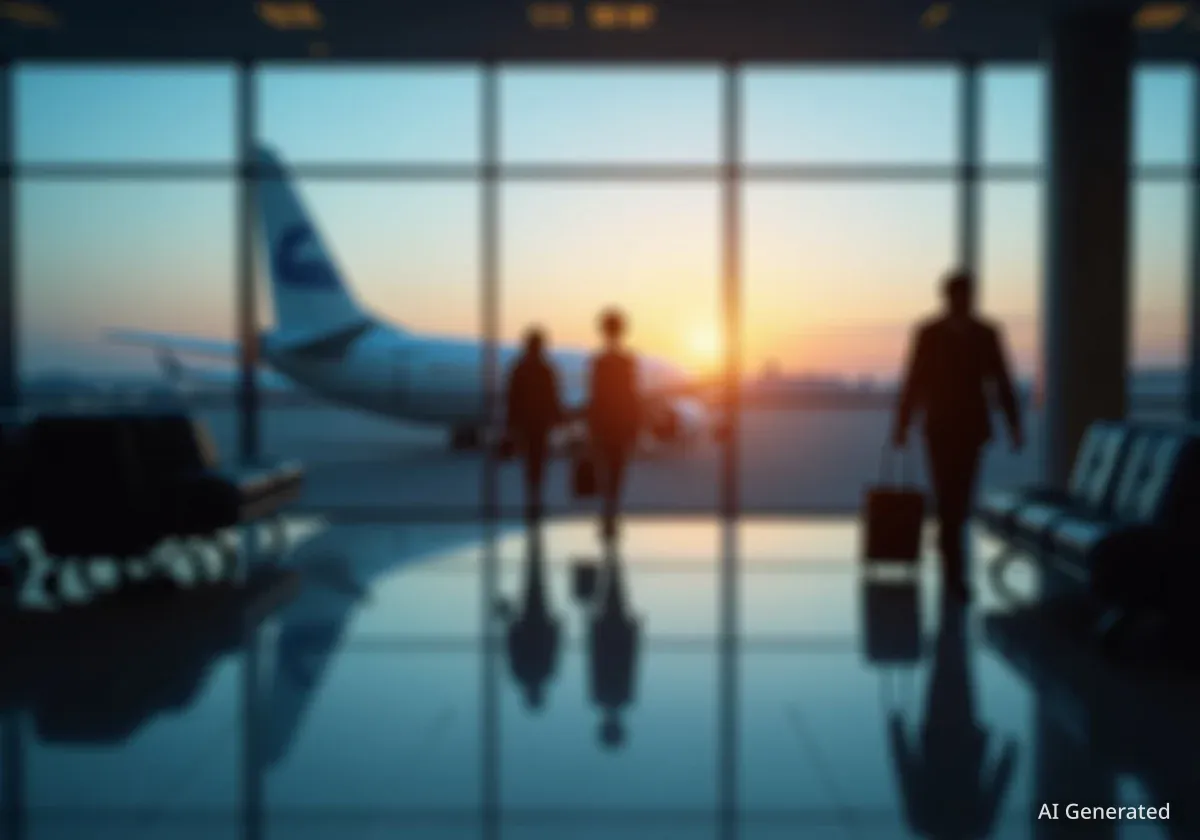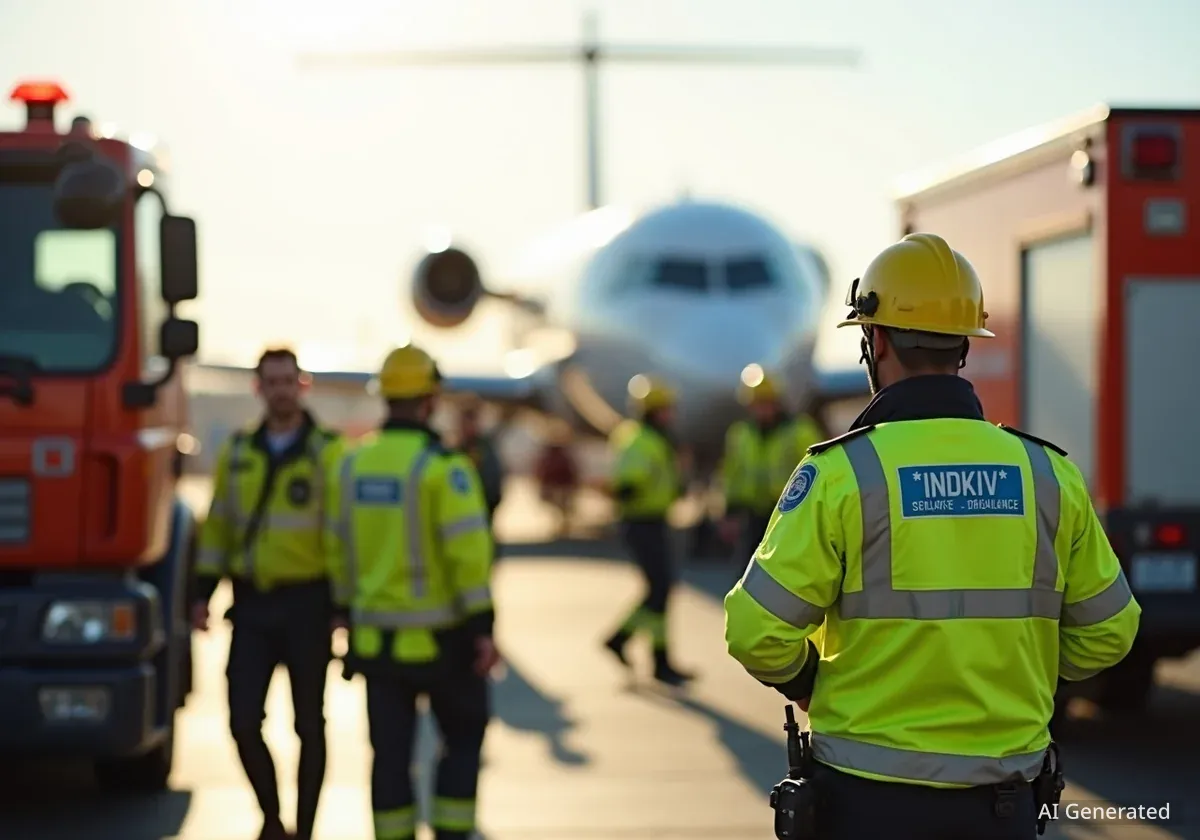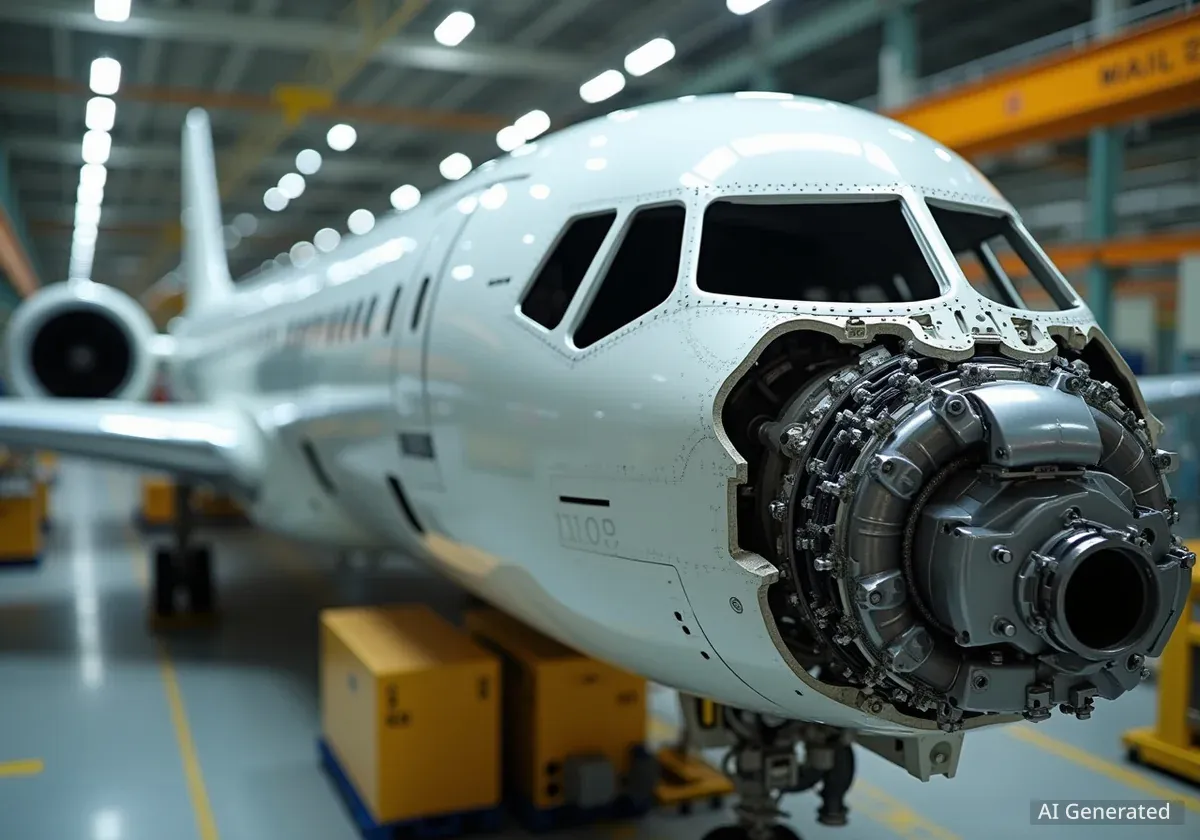The Hollywood Burbank Airport in Burbank, California, recently experienced a shutdown of its air traffic control tower due to a shortage of controllers. This event brought national attention to a long-standing issue within the federal aviation system. The closure led to significant flight delays for passengers and raised concerns about aviation safety when local towers are unstaffed.
Understanding the implications of an unstaffed air traffic control tower is crucial for both passengers and aviation professionals. When a local tower goes dark, the responsibility for managing aircraft movements shifts to other facilities, primarily regional radar centers. This process, while established, has specific limitations that can affect flight operations and potentially safety.
Key Takeaways
- Hollywood Burbank Airport's air traffic control tower closed due to a controller shortage.
- Regional TRACON facilities take over control when local towers are unstaffed.
- Pilots rely on 'see and avoid' procedures and common frequencies during tower closures.
- Experts express concerns about reduced situational awareness without local controllers.
- Understaffing leads to flight delays, groundstops, and reduced arrival rates.
Understanding Air Traffic Control Layers
Air traffic control is a complex system designed to ensure the safe and orderly movement of aircraft. Controllers are responsible for guiding planes on the ground and in the air, providing pilots with essential information.
Ross Sagun, an aviation consultant and pilot with over 50 years of experience, explains that the primary role of air traffic controllers is to prevent aircraft collisions. This is especially important when pilots cannot visually see other planes.
Fact: Three Levels of Control
The Federal Aviation Administration (FAA) categorizes air traffic control into three main levels, each managing different segments of airspace:
- Local Airport Control Towers: These controllers manage aircraft up to approximately 5,000 feet above the airport. They handle ground movements, clearances, and takeoffs and landings.
- Terminal Radar Approach Control (TRACON): Facilities like the Southern California TRACON in San Diego oversee a middle layer of airspace, typically up to 15,000 feet. They use radar to manage arriving and departing aircraft for multiple airports, including Burbank, Long Beach, and LAX.
- Air Route Traffic Control Center (ARTCC): Centers such as the Los Angeles ARTCC in Palmdale manage 'en route' traffic, which is the phase of flight between takeoff and landing. These centers monitor airspace from the surface up to 60,000 feet and cover vast geographical areas, operating continuously.
Not all airports have local control towers. According to the FAA, the U.S. has over 5,000 public airports, but only 527 have control towers. Smaller, lower-traffic airports, like Catalina, Cable, and Compton, rely on remote controllers and direct pilot communication to manage air traffic.
Impact of a Tower Closure
When the Hollywood Burbank Airport's control tower was unstaffed, the Southern California TRACON in San Diego assumed its duties. This included providing clearances for aircraft. This situation is not entirely new. During the COVID-19 pandemic, unexpected tower closures occurred more frequently.
Towers also close regularly at night, often due to commercial flight curfews. Mike Jesch, a Boeing 787 captain, notes that this is common at airports such as Long Beach, John Wayne, and Burbank. Pilots receive standard training on how to operate flights into and out of airports without towers.
"Before a student pilot goes and flies an airplane on their own for the first time, instructors will take them to an airport without a tower and make sure that they know how to get in and out safely," Jesch said.
This training emphasizes visual flight rules and direct communication between pilots on a common frequency to announce their intentions and movements.
Background: Controller Shortages
The shortage of air traffic controllers has been a persistent issue. Federal government shutdowns can exacerbate this problem, leading to staffing reductions and operational challenges at airports nationwide. This ongoing situation contributes to flight delays and can impact the efficiency of air travel.
Safety Concerns and Limitations
While pilots are trained for tower-out operations, both Sagun and Jesch expressed a preference for having local controllers present. The backup system, where TRACON takes over, has notable limitations.
"They don’t have cameras or windows or eyeballs out into the world," Jesch said, referring to TRACON controllers. "They only have a radar screen, so there’s really usually not much help around an airport."
This means TRACON controllers lack direct visual confirmation of ground movements and low-altitude air traffic, relying solely on radar data. This significantly reduces their situational awareness compared to controllers physically present in a tower.
Even when a tower is open but understaffed, safety concerns arise. Roles can be consolidated, forcing one controller to manage multiple sections of an airport. Sagun likened this to a stool with missing legs, becoming unstable.
"When you take one of the legs off the stool, things get a little bit shaky," Sagun said. "I’m real concerned about the level of safety right now."
At higher altitudes, radar provides assistance. However, at lower altitudes, especially near the airport, the responsibility largely falls on pilots to visually identify and avoid other aircraft. They use a specific frequency assigned to each airport to communicate their positions and intentions to other pilots.
Understaffing also affects communication channels. Jesch recalled an incident where he was flying into Miami. A single controller was managing all stations, making it difficult to communicate. He needed to request the runway lights be dimmed but could not get a word in. This led to a landing with excessively bright lights.
Impact on Flight Operations and Delays
The issues stemming from unstaffed or understaffed air traffic control towers directly affect flight schedules and passenger experiences. These problems can lead to significant delays and, in some cases, flight cancellations.
When a tower is understaffed, controllers often prioritize aircraft that are already in the air. This means departing planes may face longer waits on the ground. If incoming air traffic becomes too heavy, a 'groundstop' might be issued, preventing planes from taking off from their origin airports. Alternatively, aircraft might be forced to wait on the tarmac after landing.
Controllers also implement slower arrival rates when workload increases. This gives them more time to manage the existing traffic, but it prolongs the overall process. Sagun described this as a "clog in your sink with the water running," where water continues to flow but drains slowly.
The ripple effect of these delays extends beyond the affected airport. A late departure from one airport can cause subsequent delays for that aircraft and its crew at other locations. This creates a chain reaction across the national air traffic system.
"It’s going to get there late. It’s gonna depart late… and it’s a big domino effect," Sagun explained.
These cascading delays impact not only individual flights but also airline schedules and passenger connections nationwide. The efficiency of the entire air travel network depends on consistent and adequate staffing levels at all air traffic control facilities.





